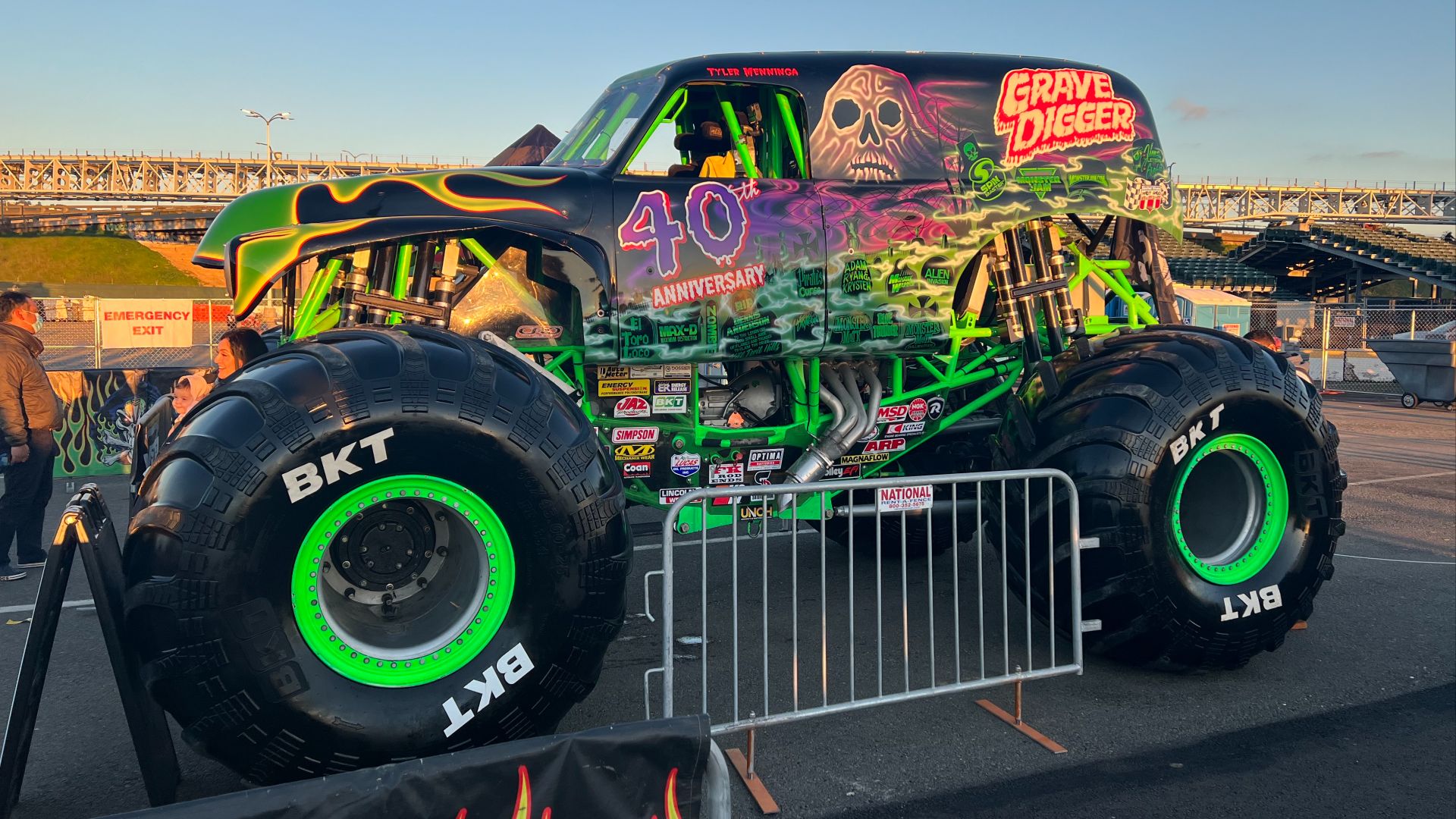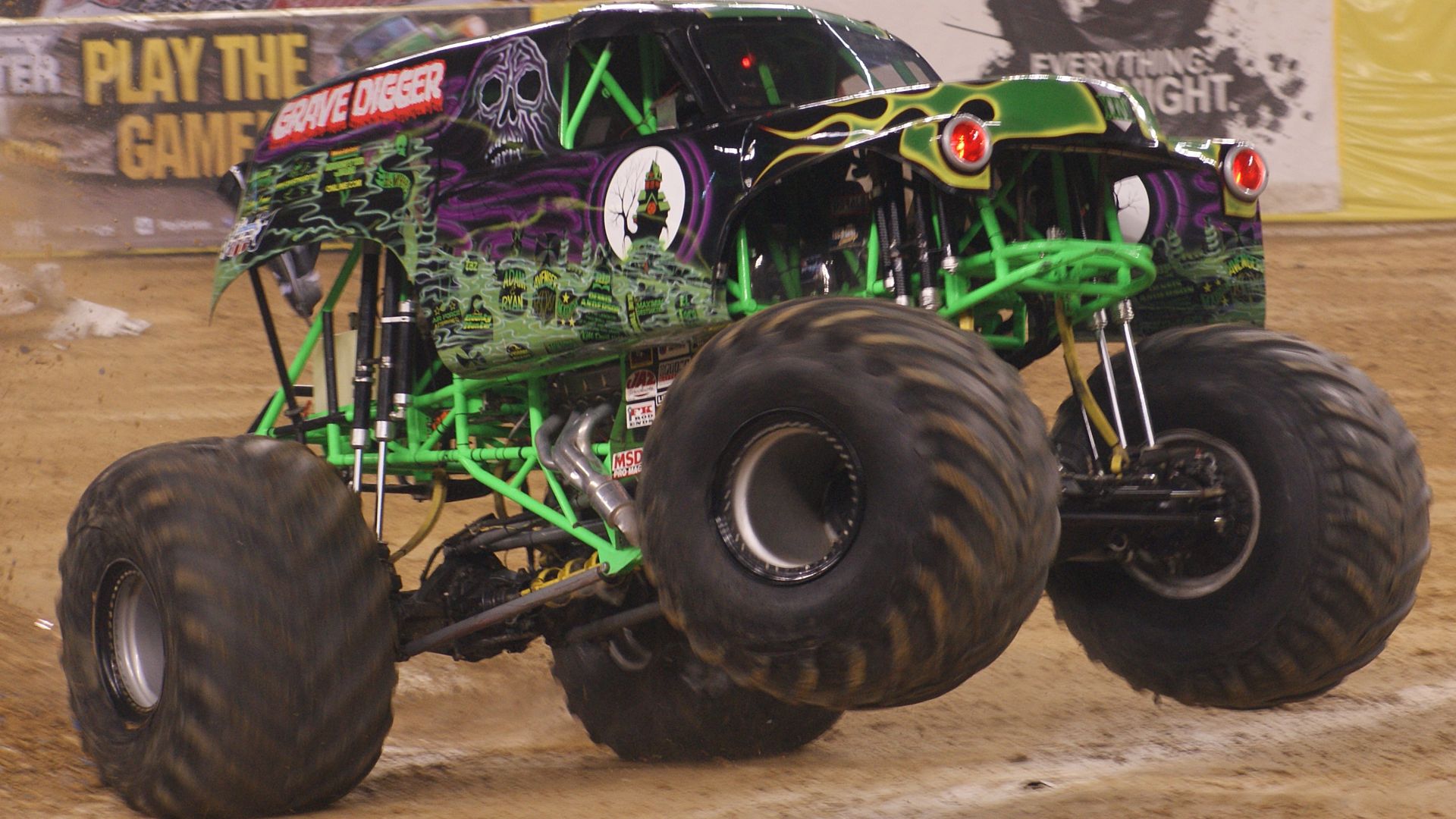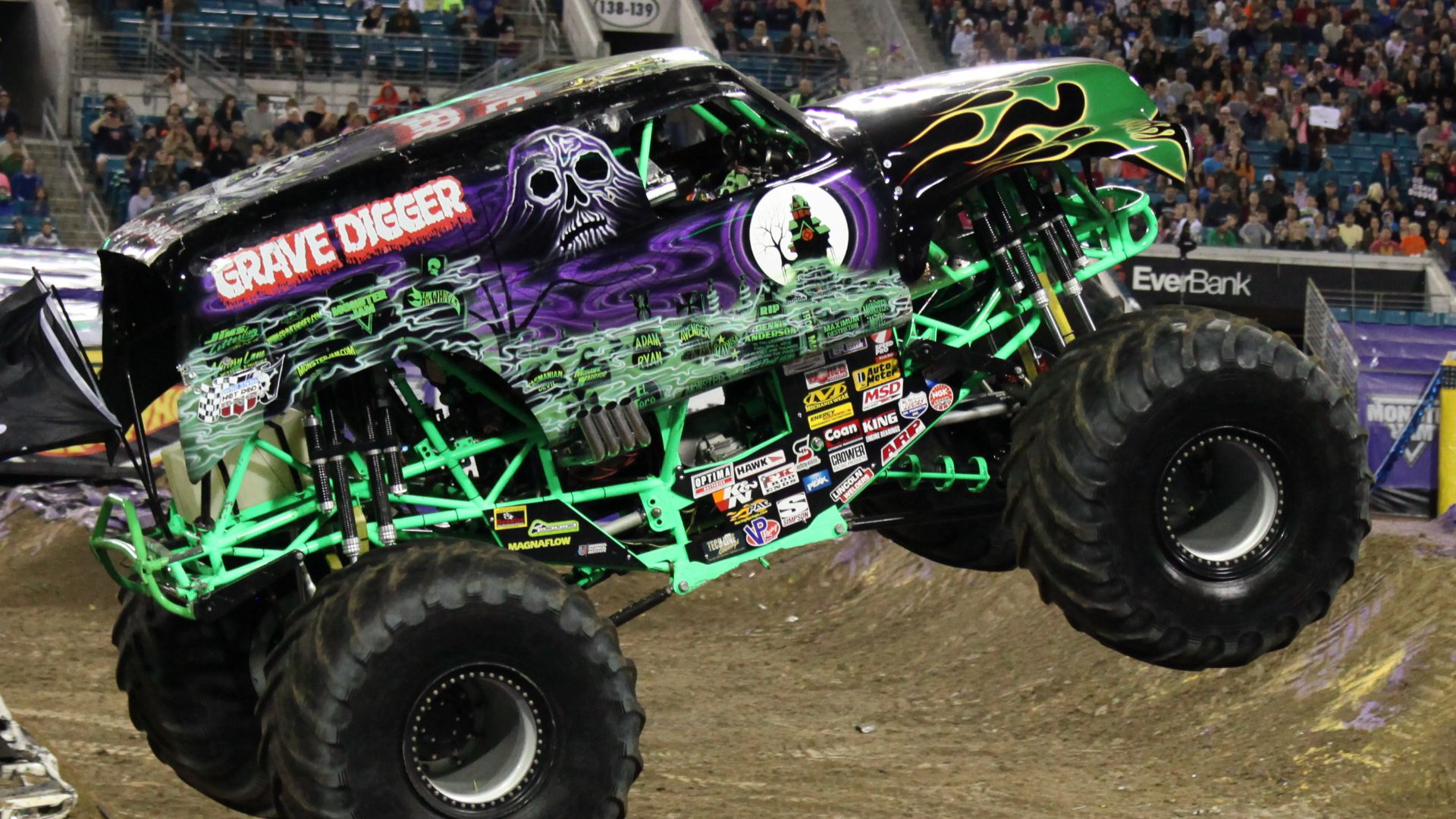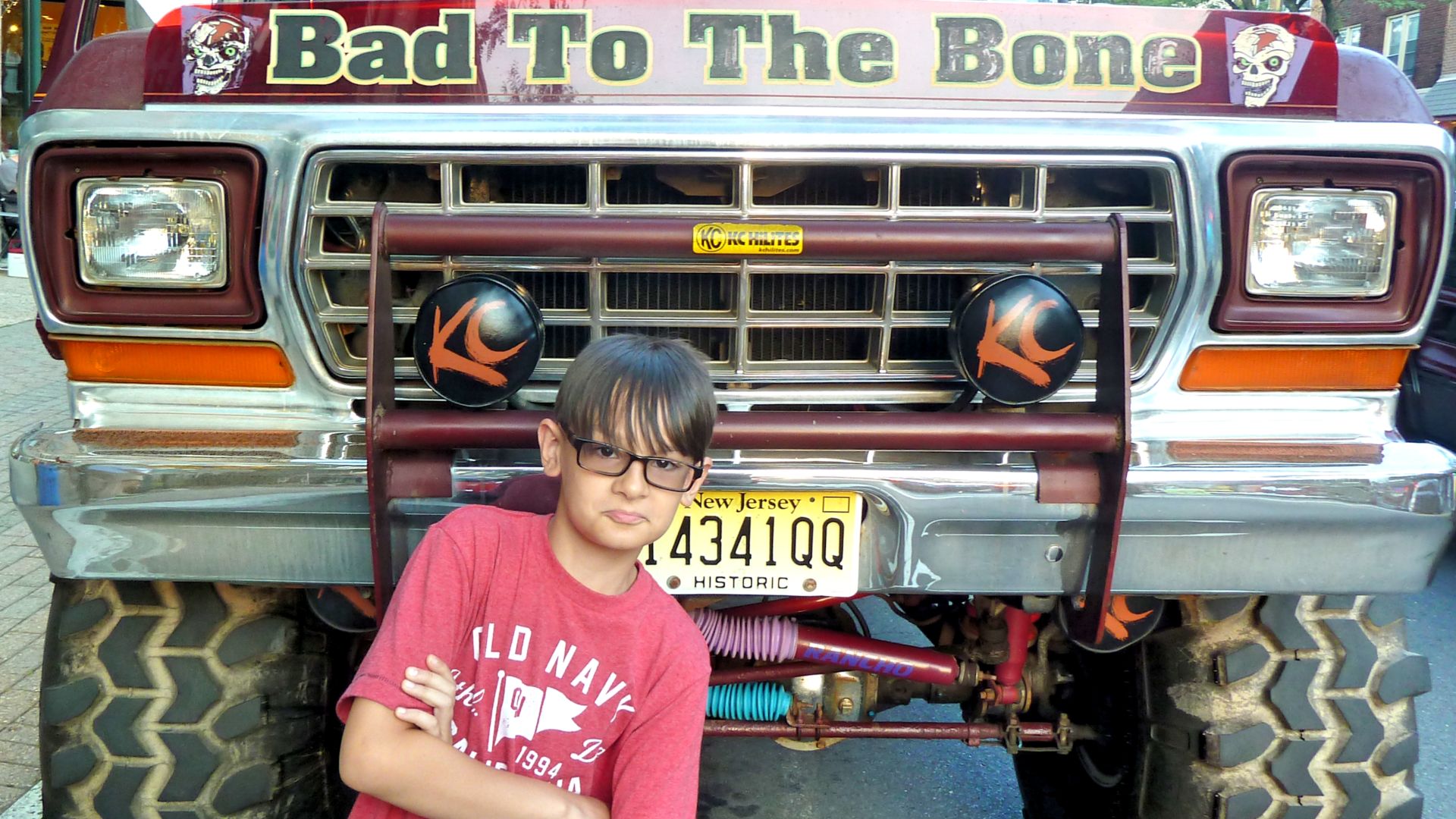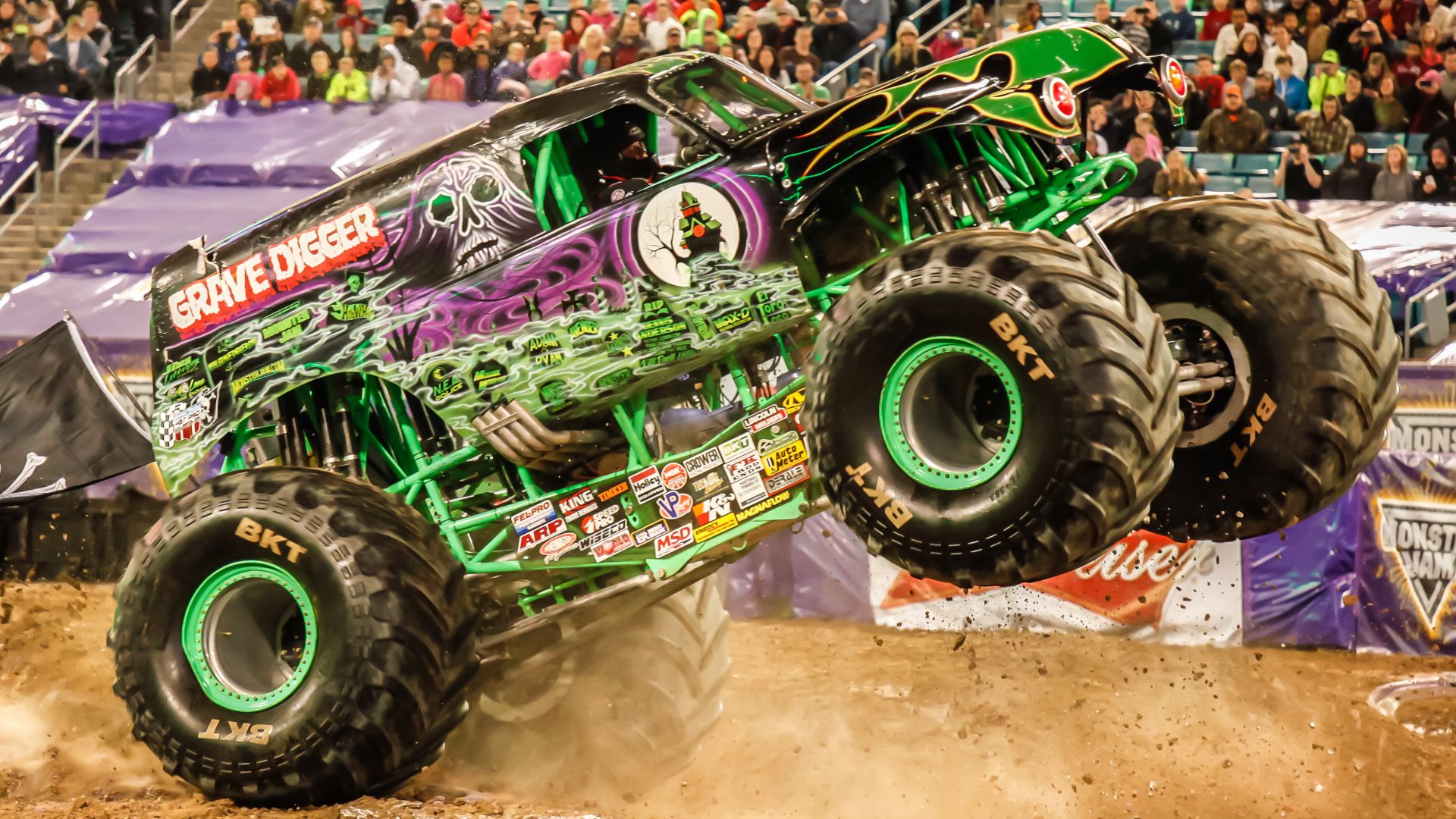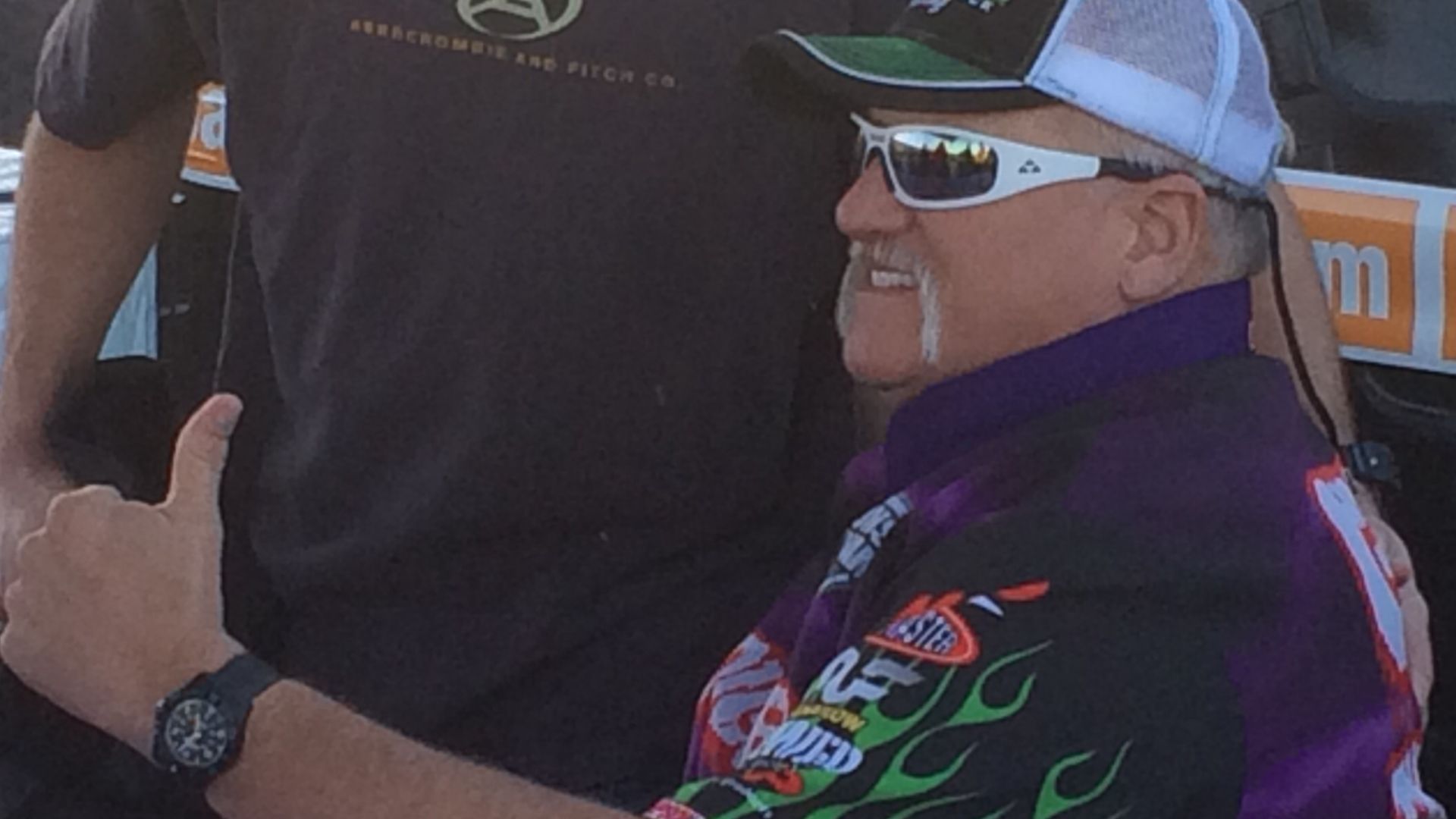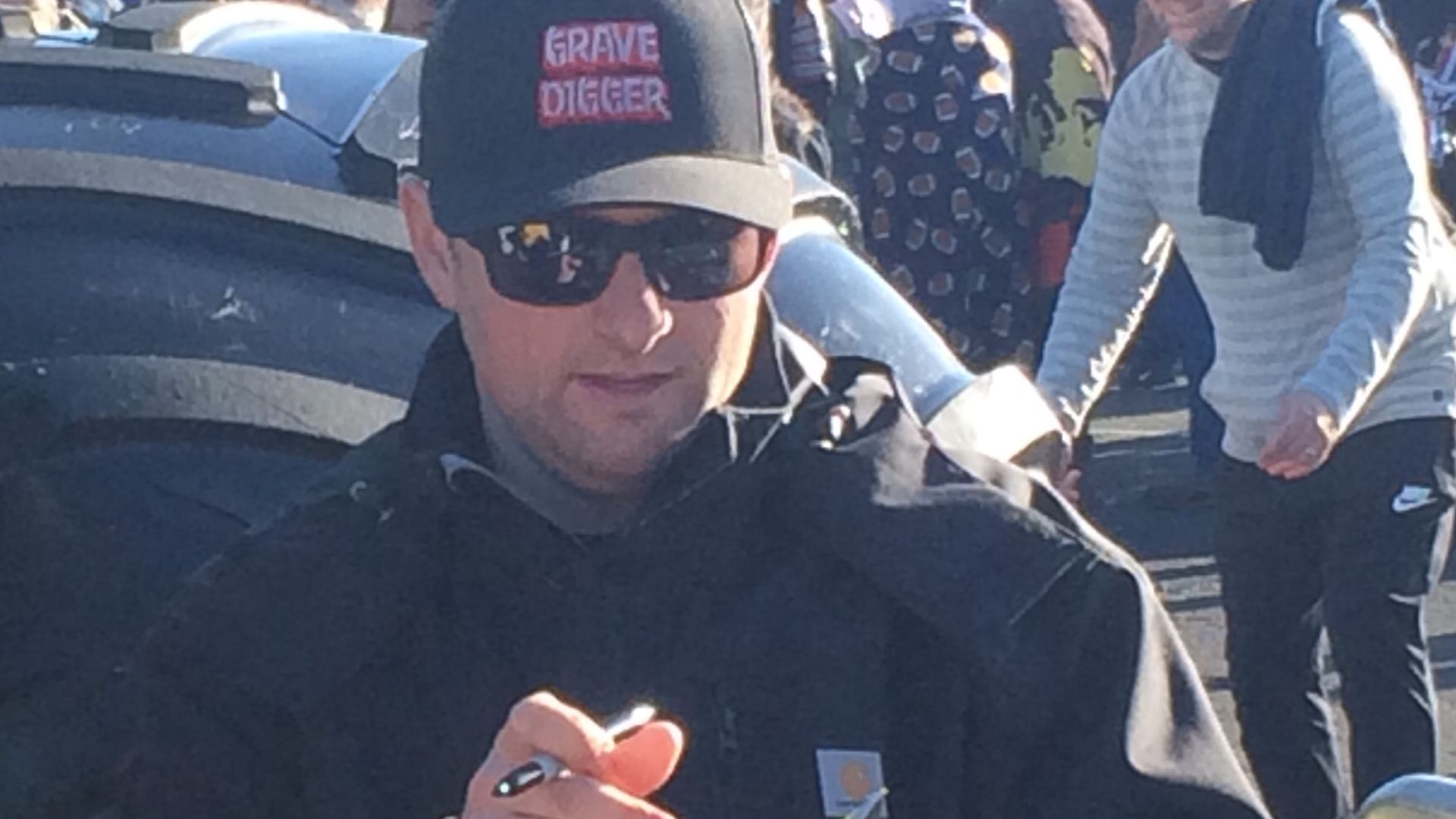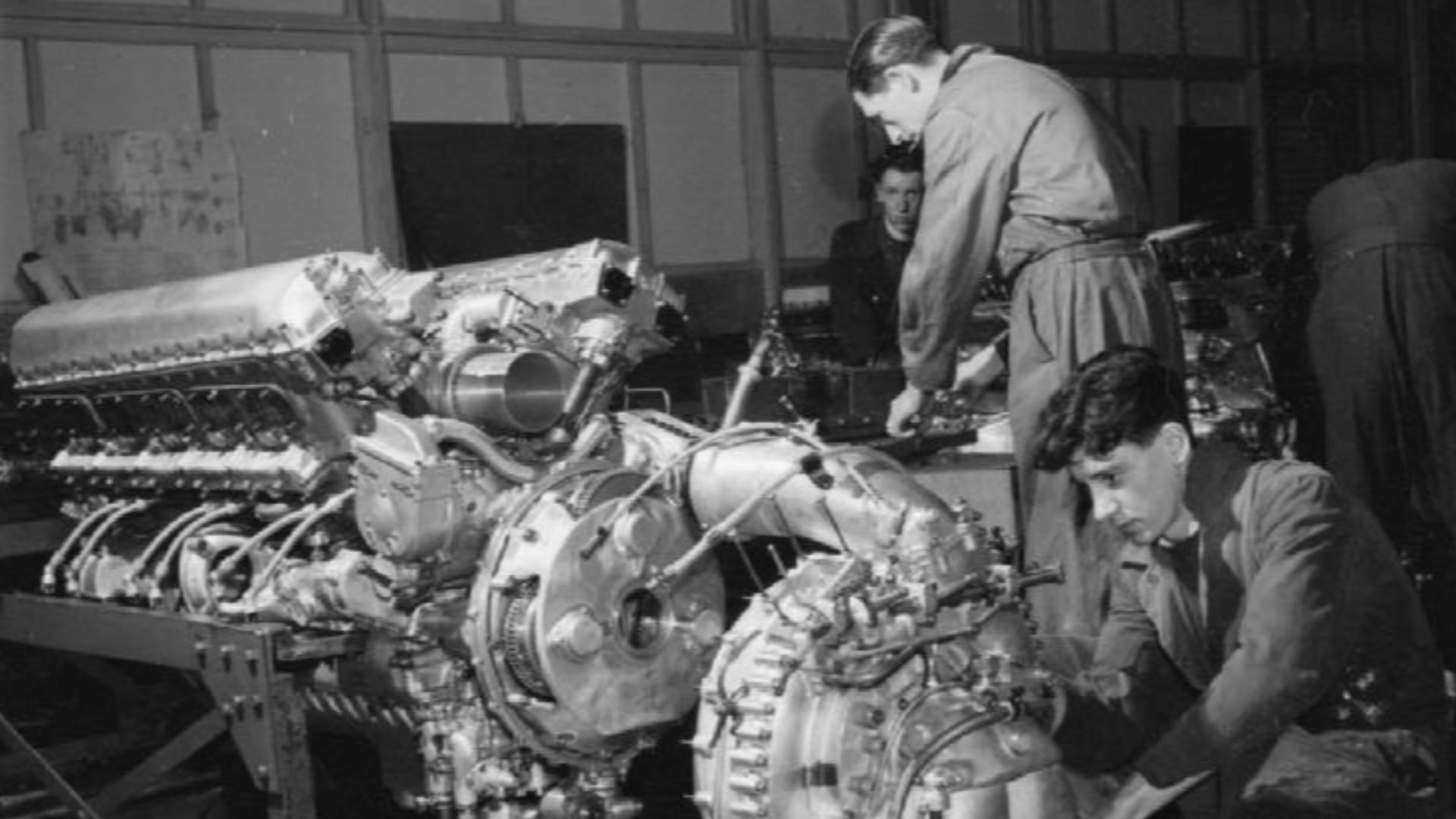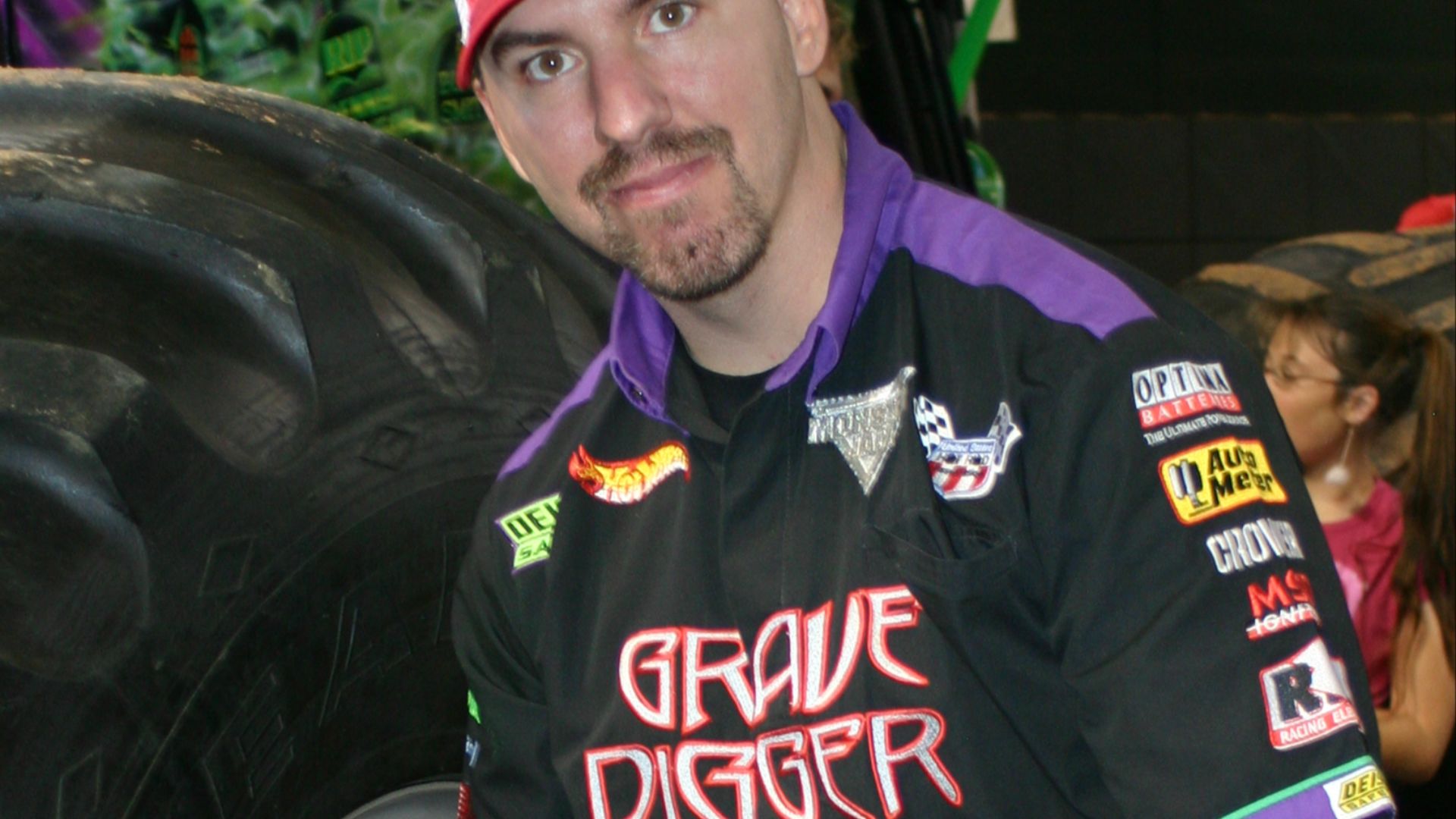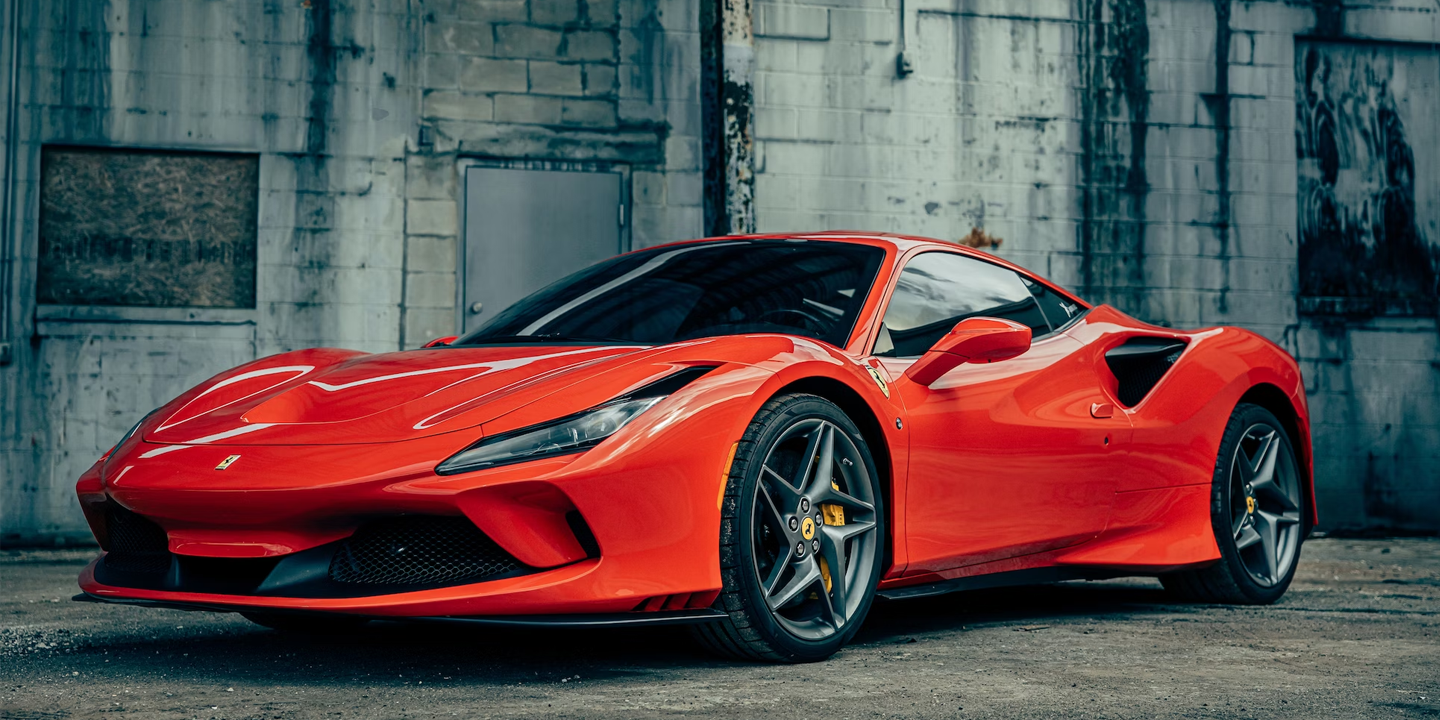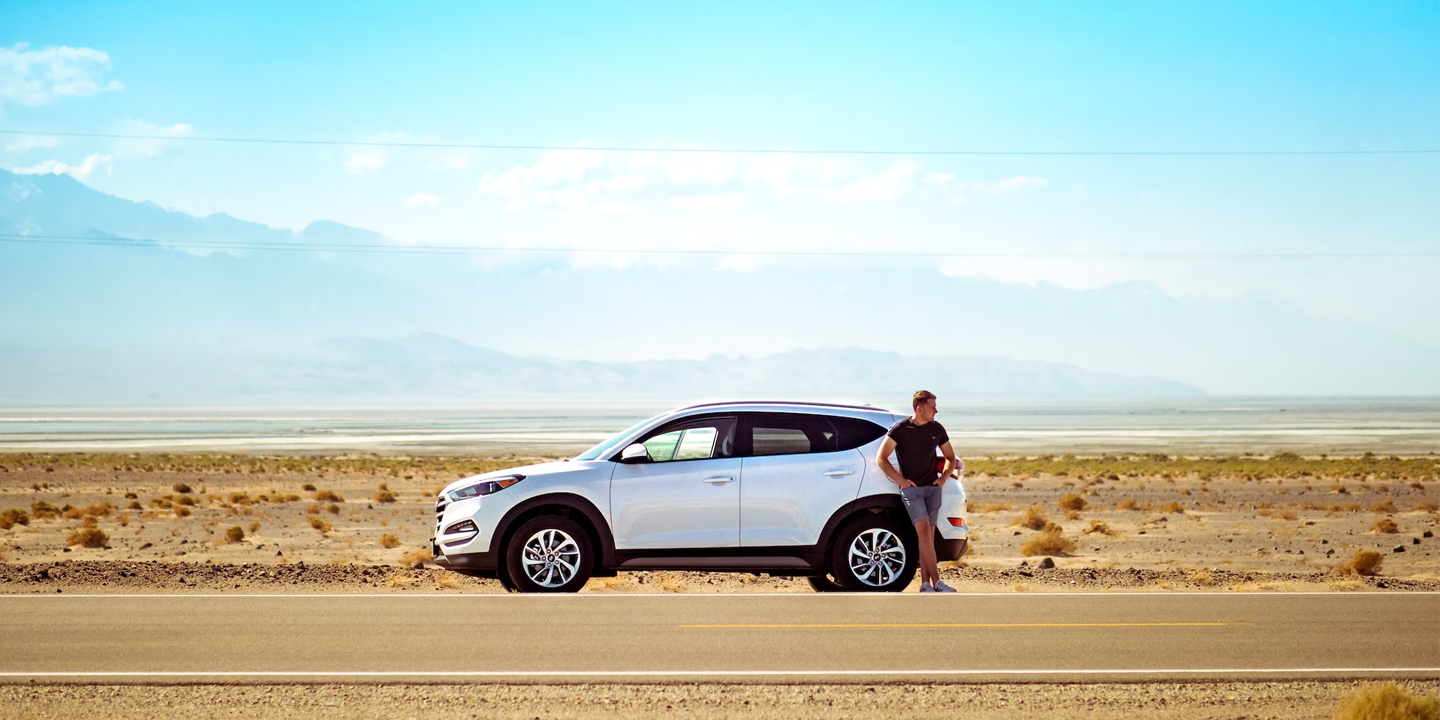Monster Truck Royalty
Grave Digger earned its crown through attitude and fearless performances. People talk about it like it’s a character instead of a vehicle, and honestly, that fits. Its presence fills arenas and pulls huge reactions every time it launches into the air. This list breaks down the facts that explain its lasting popularity. Grab a seat, because the story behind this monster is compelling from start to finish.
1. Birth Of Grave Digger
The story begins in a dirt-floored workshop near the North Carolina and Virginia line, where Dennis Anderson pieced together a mud bogger from salvaged parts. He shaped it around a red 1952 Ford pickup body, building it by hand as his own wild experiment that sparked curiosity.
 Rob Bixby from Jacksonville, FL, USA on Wikimedia
Rob Bixby from Jacksonville, FL, USA on Wikimedia
2. The Name Grave Digger
During a heated moment with racers who teased his old truck, Anderson fired back with a quick line that stuck forever. “I’ll take this old junk and dig you a grave with it,” he said. That remark formed the name that fans still repeat today.
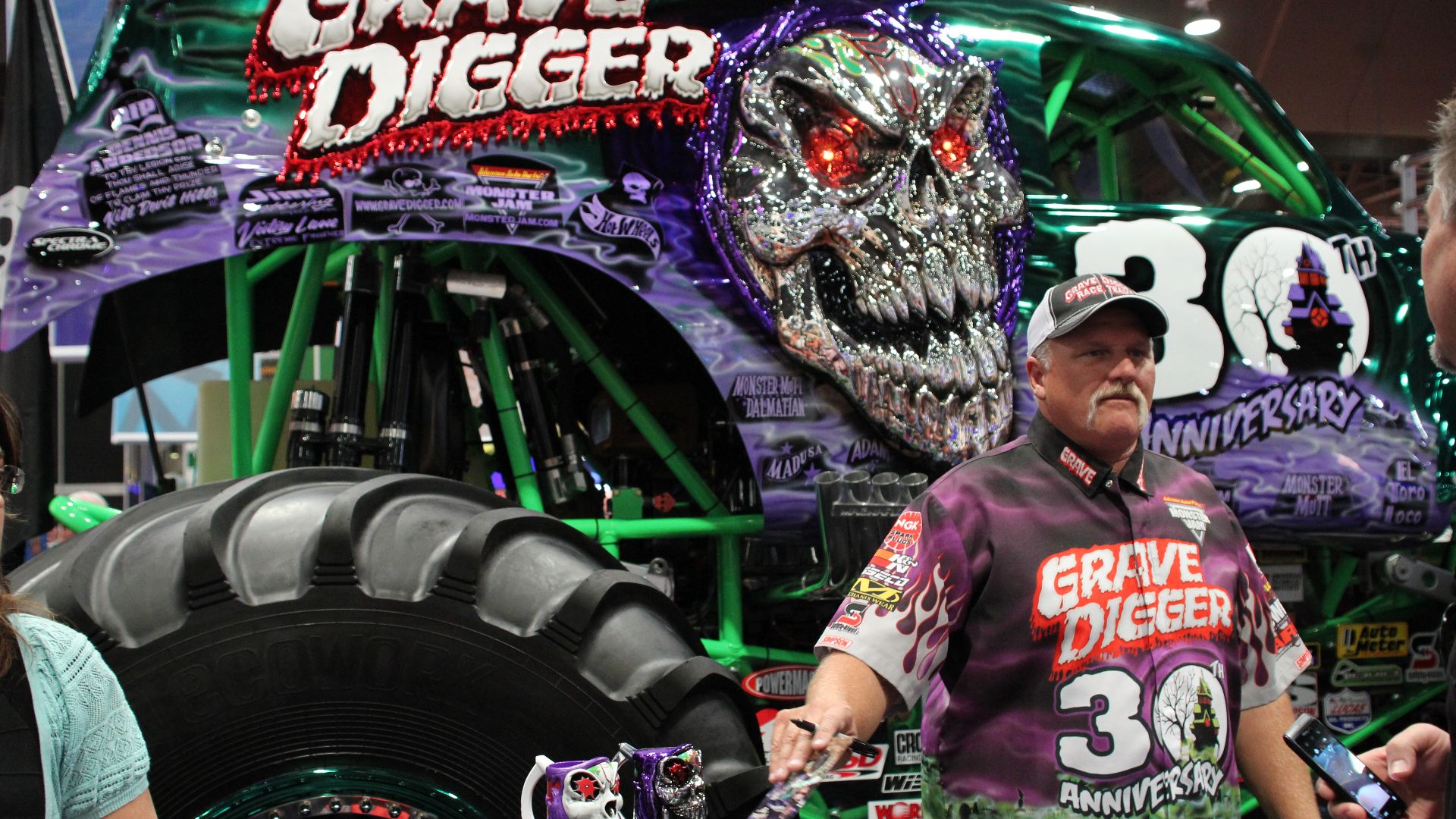 RyC - Behind The Lens from San Francisco, United States of America on Wikimedia
RyC - Behind The Lens from San Francisco, United States of America on Wikimedia
3. Monster Truck Shows
Crowds first noticed Anderson during a mud bogging event, although things shifted when a promoter tossed him an unexpected chance to crush cars. The moment the truck rolled over those abandoned vehicles, excitement filled the arena and opened a fresh path into monster truck shows.
4. Evolution Of The Body Styles
As years moved along, Anderson experimented with different bodies, including a 1951 Ford panel van painted silver and blue, before he turned toward the black graveyard theme. Each rebuild shaped the truck into something tougher.
5. Signature Black And Green Flame
The truck’s famous look came together in 1986 by covering the panels in deep black with bright green flames curling across the sides. Junkyards even supplied the early red headlights. Before this style took over arenas, the body appeared in simple orange paint at local events.
6. Graveyard Artwork
Fans instantly recognize the eerie mix of tombstones, flames, and a ghost-like skull stretched across the truck. Anderson brought that idea straight from his imagination, eager to create something unforgettable. Over time, artists added purple highlights and updated graphics to keep the design fresh for every generation.
7. Bad To The Bone Tradition
Every Monster Jam crowd feels the energy shift once the opening notes of Bad to the Bone kick in. The late-80s tradition tied the song to the truck’s entrances, turning each arrival into a moment fans anticipate as an essential part of the Grave Digger experience.
8. First Televised Monster Truck Race Appearance (1987)
Grave Digger gained national fame when it was featured in the TNT Motorsports televised events in 1987, which marked its debut on mainstream TV. This exposure introduced the truck to millions of households and helped transform Monster Jam into a recognized motorsport.
9. Sale To FELD Motorsports In 1998
Grave Digger entered a huge new chapter once FELD Motorsports took over the brand in 2000. Their leadership placed the truck at the center of Monster Jam, expanding the lineup with more drivers and versions that carried the Grave Digger legacy into arenas across the globe.
10. Dennis Anderson’s Retirement
After decades behind the wheel and a career filled with championship highlights, Anderson stepped aside in 2017. Fans still remember his fearless style, which earned him the name “One Run Anderson,” while his son, Adam, restored the first Grave Digger to its original glory.
11. Family Legacy
Fans often talk about how Dennis Anderson’s children shaped the sport, especially with Adam collecting multiple World Finals titles. Krysten stepped in with her own milestone as the first female Grave Digger driver, while Weston brought his energy to Monster Jam through other trucks.
12. Over 30 Trucks Built Worldwide
Across the decades, the brand expanded into more than thirty documented builds. Multiple trucks appear at events worldwide that allow audiences everywhere to see the iconic colors in person. Even the display cabs draw long lines because the truck’s appeal keeps growing.
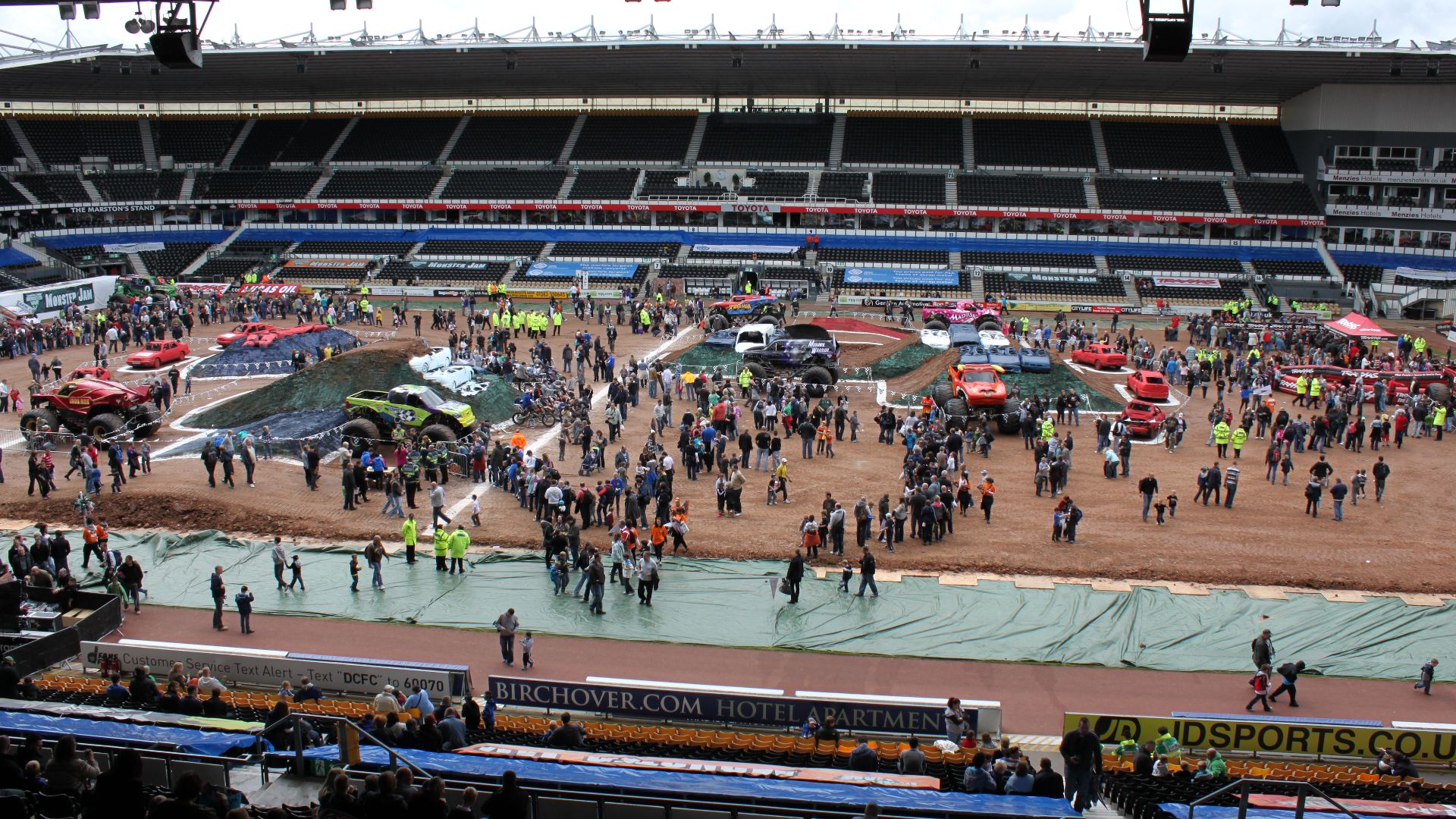 Flickr upload bot on Wikimedia
Flickr upload bot on Wikimedia
13. Freestyle Performances
Every freestyle run brings a level of energy that audiences anticipate long before the engine starts. The truck reaches thirty miles an hour in just over a second and carries that pace into jumps and daring moves.
14. Digger’s Dungeon Tourist Destination
Located in Poplar Branch, North Carolina, Digger’s Dungeon serves as both a working garage and a fan attraction. Visitors can see retired Grave Digger trucks, ride in monster trucks, eat at Digger’s Diner, and explore the “Rust in Piece” museum—making it a pilgrimage site for fans worldwide.
 Beadmobile from Off World Colony, USA on Wikimedia
Beadmobile from Off World Colony, USA on Wikimedia
15. Merlin Engine Power
A 540-cubic-inch Merlin V8 sits at the core and delivers around 1,500 horsepower through a two-speed Powerglide transmission. It accelerates with a force that fills arenas with cheers. The engine ranks among the most expensive in the sport, which shows how seriously the team treats performance.
16. 66-Inch Tires
Those towering 66-inch tires create the signature silhouette fans spot instantly across an arena. Originally adapted from agricultural equipment, they help the truck crush with power. Drivers usually enter from underneath, though Grave Digger’s swing-out door adds convenience for fast-paced events.
 Kevin Cabral from Toronto, Canada on Wikimedia
Kevin Cabral from Toronto, Canada on Wikimedia
17. Son-Uva Digger As Spin-Off Truck
When Adam Anderson introduced Son-Uva Digger in 2011, fans welcomed it as a bold extension. It carried a fresh look and earned loyal supporters quickly. Adam’s award-winning freestyle runs strengthened its presence and gave the Grave Digger universe another fan favorite.
18. Official Merchandise And Sponsorship Legacy
Grave Digger’s popularity extends beyond the arena through licensed die‑cast models, apparel, and collectibles sold globally. Its merchandise line, combined with Monster Jam sponsorships, helped cement the truck as a commercial powerhouse,
19. Famous Crashes
Wildwood produced one of the truck’s most talked-about moments when Grave Digger #12 flipped and was permanently retired. That crash, along with others from competitive runs, highlighted the sport’s intensity and helped shape the truck’s bold, risk-driven identity.
 The original uploader was Arenacale at English Wikipedia. on Wikimedia
The original uploader was Arenacale at English Wikipedia. on Wikimedia
20. Appearances In Video Games
Many young fans discover Grave Digger through games like Monster Jam Steel Titans and Urban Assault, supported by licensed die-cast models. Consistent branding keeps its look recognizable, helping collectibles attract new audiences and bolster loyalty.


